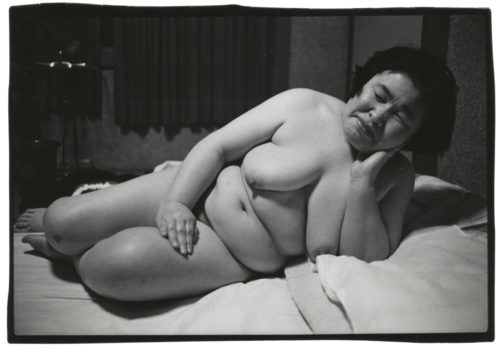Japanese photographer Masahisa Fukase is exhibited for the first time in the United Kingdom. The Michael Hoppen Gallery inaugures today Solitude of Ravens with vintage prints from Fukase.
Masahisa Fukase’s Karasu (Ravens) was made between 1976 and 1982 in the wake of his wife Yōko Wanibe divorcing him. The visual narrative of the series revolves around the anthropomorphic form of the raven. Dead and alive the birds punctuate the work; lone birds reduced to shadow puppetry against the snow or dislocated flocks that mimic the grain of the photographs themselves. Although interjected with other subjects such as blizzard streaked streets or the fleshy form of a nude masseuse, it is the recurrent presence of the ravens that sets the ominous and cinematic tone of the work.
Akira Hasegawa in her poetic afterword to the book summarises Ravens with the following: “In the case of Masahisa Fukase, the subject of his gaze became the raven. For him, the “raven” was both a tangible creature and a fitting symbol of his own solitude”. At the end of the project in 1982 Fukase himself enigmatically wrote that he had “become a raven”.
Ravens are an omnipresent feature of urban Japan. As in the west, the image of the raven is seen as the harbinger of dark times. Fukase came to prominence as a photographer in the aftermath of WWII and as such the series has, on occasion, been read as a commentary upon the shadow cast by Japan’s defeat. Inherently abstract this elusive soliloquy is open to multiple interpretations. Primarily, however, the photographs are a personal lament reflecting the darkened vision of the photographer himself. Regarded by many as the most important body of work to come out of postwar Japan, Ravens’ haunting imagery continues to inspire artists and writers today.
EXHIBITION
Solitude of Ravens
Masahisa Fukase
From February 24th to April 23rd, 2016
Michael Hoppen Gallery
3 Jubilee Place
London SW3 3TD
United Kingdom
http://www.michaelhoppengallery.com
















